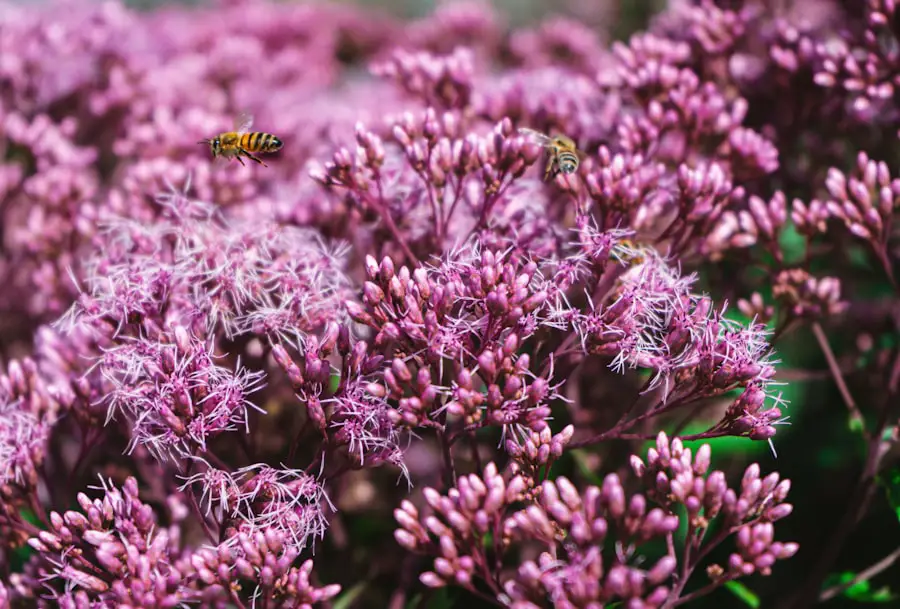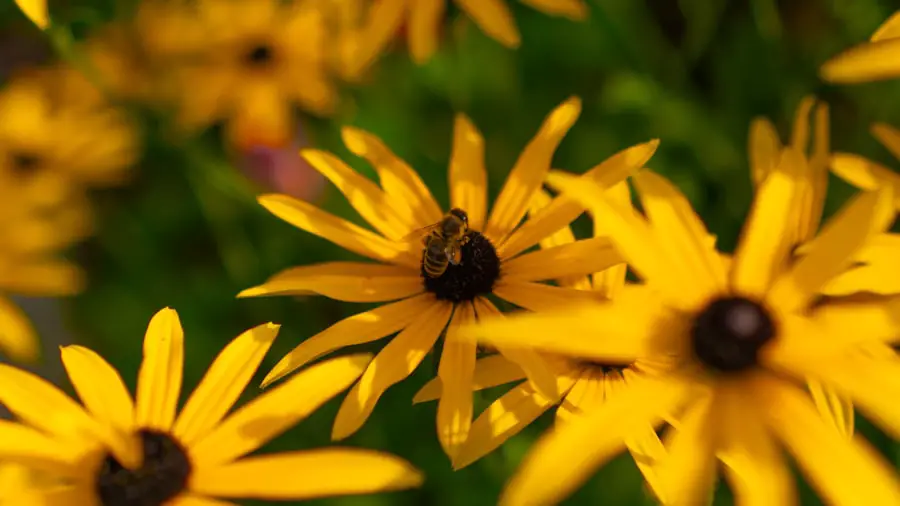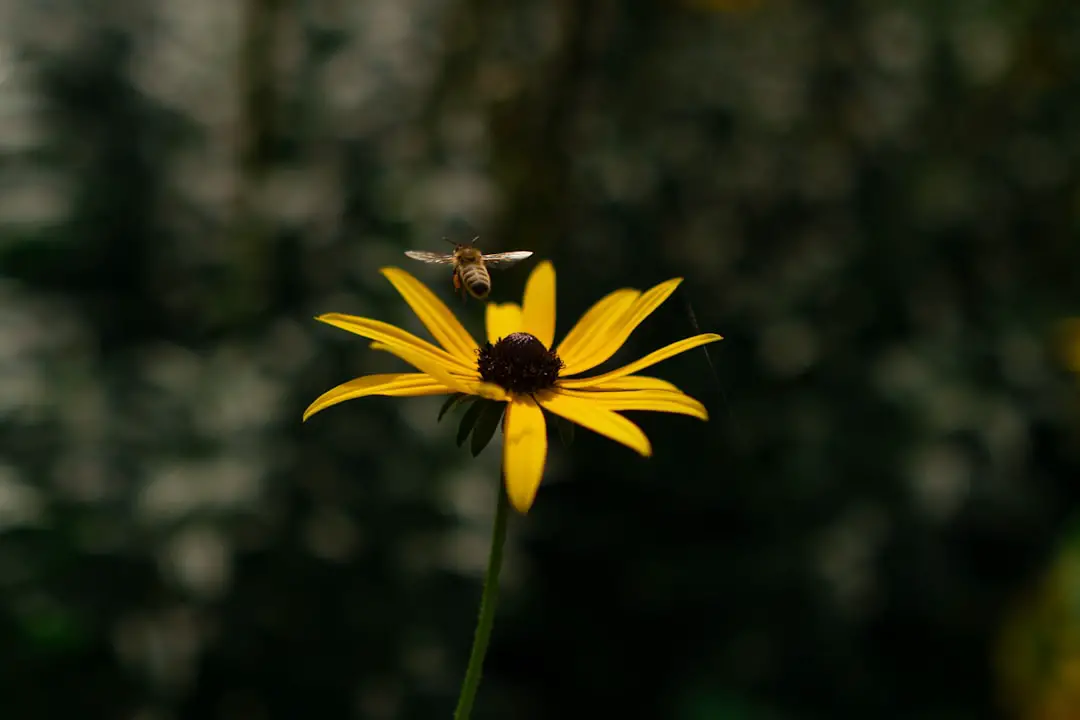Honey bees, belonging to the genus Apis, are remarkable creatures that play a pivotal role in our ecosystems and agriculture. Their foraging range, which can extend several miles from their hives, is a critical aspect of their behavior and survival. This range is not merely a measure of distance; it encompasses the intricate relationship between honey bees and their environment, including the availability of floral resources, the presence of predators, and the overall health of the ecosystem.
Understanding the honey bee’s foraging range is essential for appreciating their contributions to biodiversity and food production. The foraging behavior of honey bees is influenced by various factors, including species, environmental conditions, and the availability of resources. For instance, while some species may forage within a radius of one to two miles, others can travel up to five miles or more in search of nectar and pollen.
This extensive range allows honey bees to access a diverse array of flowering plants, which is crucial for their nutrition and the pollination services they provide. As we delve deeper into the intricacies of honey bee foraging, we will uncover the scientific principles that govern their range and the implications for both natural ecosystems and agricultural practices.
Key Takeaways
- Honey bees have a wide range, spanning from Europe to Africa and Asia, and have been introduced to other parts of the world.
- Foraging is crucial for honey bees as they collect nectar, pollen, water, and propolis, which are essential for their survival and the production of honey.
- The honey bee’s foraging range is influenced by factors such as food availability, weather, and the presence of predators.
- Urbanization can negatively impact honey bee foraging by reducing the availability of flowers and increasing exposure to pesticides and pollutants.
- Honey bees navigate their foraging range using a combination of visual cues, memory, and communication with other bees.
The Importance of Foraging for Honey Bees
The Importance of Nectar and Pollen
The primary goal of foraging is to collect nectar and pollen, which serve as food sources for adult bees and developing larvae. Nectar is primarily composed of sugars, providing energy, while pollen is rich in proteins, fats, vitamins, and minerals essential for growth and development.
The Broader Impact of Honey Bee Foraging
The collection of these resources is vital for maintaining the health of the hive and ensuring its reproductive success. Moreover, honey bee foraging has far-reaching implications beyond the hive. As they move from flower to flower, honey bees inadvertently transfer pollen, facilitating the process of pollination.
The Economic Value of Pollination Services
This process is crucial for the reproduction of many flowering plants, including a significant portion of crops that humans rely on for food. In fact, it is estimated that one-third of the food consumed by humans is dependent on pollinators like honey bees. The economic value of honey bee pollination services is staggering, with estimates suggesting that they contribute billions of dollars annually to global agriculture.
The Science Behind the Honey Bee’s Range

The foraging range of honey bees is a subject of extensive scientific research that combines elements of ecology, behavior, and physiology. One key factor influencing this range is the concept of optimal foraging theory, which posits that animals will maximize their energy intake while minimizing energy expenditure during foraging activities. Honey bees exhibit this behavior by selecting flowers that offer the highest rewards in terms of nectar and pollen while considering the distance they must travel to reach these resources.
Research has shown that honey bees are capable of assessing the quality and quantity of floral resources available in their environment. They utilize a combination of visual cues, scent detection, and memory to identify profitable foraging sites. For example, studies have demonstrated that honey bees can remember the locations of flowers they have previously visited and can communicate this information to other members of their colony through a sophisticated dance language known as the waggle dance.
Factors Affecting the Honey Bee’s Foraging Range
| Factor | Description |
|---|---|
| Weather | Temperature, wind, and precipitation can affect the distance bees are able to forage. |
| Floral Resources | The availability and diversity of flowers in the surrounding area can impact the foraging range. |
| Colony Strength | The size and health of the bee colony can influence the foraging range. |
| Land Use | The type of land (urban, agricultural, natural) surrounding the hive can affect foraging opportunities. |
| Pesticides | The presence of pesticides in the environment can impact bee foraging behavior and range. |
Several factors can influence the foraging range of honey bees, including environmental conditions, floral availability, and competition with other pollinators.
On warm, sunny days with low wind speeds, honey bees are more likely to venture further from their hives in search of food.
Conversely, inclement weather can restrict their foraging activities and limit their range. Floral availability is another critical factor that directly impacts honey bee foraging behavior. The presence of diverse flowering plants within a given area can encourage bees to expand their foraging range.
In contrast, monoculture farming practices can limit the variety of available floral resources, forcing bees to travel longer distances to find suitable food sources. Additionally, competition with other pollinators can also affect how far honey bees will venture from their hives; if other species are abundant in an area, honey bees may need to increase their foraging range to secure enough resources.
The Impact of Urbanization on Honey Bee Foraging
Urbanization presents both challenges and opportunities for honey bee foraging. As cities expand and natural habitats are replaced with concrete structures and roads, the availability of floral resources can diminish significantly. However, urban environments can also provide unique opportunities for honey bees if managed thoughtfully.
Urban gardens, parks, and green roofs can serve as vital habitats that support diverse plant life and provide essential resources for foraging bees. Research has shown that urban areas can host a surprising variety of flowering plants that bloom at different times throughout the year. This continuous availability of food sources can help sustain honey bee populations even in densely populated regions.
Moreover, urban beekeeping has gained popularity in recent years as individuals recognize the importance of supporting pollinator populations. By planting bee-friendly gardens and creating green spaces that prioritize native flora, urban dwellers can contribute positively to honey bee foraging efforts.
How Honey Bees Navigate Their Foraging Range

Honey bees possess remarkable navigational abilities that allow them to efficiently locate food sources within their foraging range. Their navigation relies on a combination of innate instincts and learned behaviors. One key aspect of their navigation is their ability to use landmarks in their environment as reference points.
Bees can recognize specific features such as trees, buildings, or even changes in terrain to orient themselves as they travel back and forth from their hives. In addition to visual cues, honey bees also utilize the position of the sun as a navigational aid. They have specialized photoreceptors in their eyes that allow them to detect polarized light patterns in the sky, which helps them determine the sun’s position even on cloudy days.
Furthermore, research has indicated that honey bees can also use olfactory cues to navigate; they can detect scents associated with specific flowers or areas where they have previously foraged. This multi-faceted approach to navigation enables honey bees to efficiently exploit their foraging range while minimizing energy expenditure.
The Role of Honey Bee Foraging in Ecosystem Health
The foraging activities of honey bees are integral to maintaining ecosystem health and biodiversity. As they pollinate a wide variety of flowering plants, they contribute to plant reproduction and genetic diversity within ecosystems. This process not only supports healthy plant populations but also provides habitats and food sources for other organisms within the ecosystem.
Moreover, honey bee foraging has cascading effects on food webs and ecological interactions. Many plants that rely on pollination by honey bees are foundational species in their ecosystems; their presence supports various herbivores and other wildlife that depend on them for sustenance. The decline or absence of honey bee populations could lead to significant disruptions in these ecological relationships, ultimately affecting entire ecosystems’ stability and resilience.
Supporting Honey Bee Foraging: How You Can Help
Individuals can play a crucial role in supporting honey bee foraging efforts through various actions that promote healthy habitats and floral diversity. One effective way to help is by planting native flowering plants in gardens or community spaces. Native plants are well-adapted to local conditions and provide essential resources for honey bees throughout different seasons.
By creating a diverse array of blooms that offer nectar and pollen at various times of the year, individuals can ensure that honey bees have access to food sources when they need them most. Additionally, reducing pesticide use is vital in supporting honey bee populations. Many common pesticides are harmful to bees and can impair their ability to forage effectively or even lead to colony collapse.
By opting for organic gardening practices or using integrated pest management strategies that minimize chemical exposure, individuals can create safer environments for these essential pollinators. Engaging in local beekeeping initiatives or supporting local beekeepers can also contribute positively to honey bee populations. Beekeepers often work diligently to maintain healthy hives and promote sustainable practices that benefit both bees and local ecosystems.
By purchasing local honey or participating in community beekeeping programs, individuals can help foster a culture that values and protects these vital insects. In conclusion, understanding the intricacies of honey bee foraging ranges reveals not only their remarkable adaptations but also highlights our responsibility in supporting their survival amidst changing environments. Through informed actions and community engagement, we can all contribute to ensuring that these essential pollinators continue to thrive in our ecosystems.
If you’re interested in exploring the great outdoors and enjoying nature, you may also want to check out this article on the best solar-powered camping lanterns. These lanterns are perfect for illuminating your campsite while minimizing your environmental impact. Plus, they are a convenient and sustainable option for outdoor adventures.
FAQs
How far can a honey bee travel in 30 minutes?
A honey bee can travel up to 1.5 miles in 30 minutes.
What factors can affect a honey bee’s travel distance in 30 minutes?
Factors such as wind speed, temperature, and the availability of nectar sources can affect a honey bee’s travel distance in 30 minutes.
How fast can a honey bee fly?
A honey bee can fly at an average speed of 15 miles per hour.
What is the purpose of a honey bee’s long-distance travel?
Honey bees travel long distances in search of nectar and pollen to bring back to their hive for food and to support the colony’s growth.
How does a honey bee navigate during its long-distance travel?
Honey bees navigate using a combination of visual landmarks, the position of the sun, and their ability to detect polarized light patterns in the sky.
